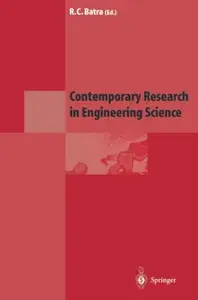
Free Download Contemporary Research in Engineering Science By D. Allen, K. Helms, L. Hurtado, D. Lagoudas (auth.), Prof. Dr. Romesh C. Batra (eds.)
1995 | 685 Pages | ISBN: 3642800033 | PDF | 27 MB
Fatigue failures occur in aerospace,marine,nuclear structures and automobile com ponents from initiation and propagation of cracks from holes,scratches or defects in the material. To design against these failures, crack propagation life and fracture strength need to be accurately predicted. It is reported in the literature, that these failures often initiate as surface cracks, corner cracks and cracks emanating from fastner holes. Such cracks are with elliptic or nearly elliptic in shapes. The deviation from elliptic shape is due to varying constraint effect along the crack front. Even in situations, when the cracks are through the thickness of the material, there would be thicknesswise variation of constraint effects leading to three dimensional nature of crack growth. Accurate predictions of the crack growth in these cases by numerical methods can be made only by solving three-dimensional boundary value problems. Empirical relationships have been developed [1] based on Linear Elastic Fracture Mechanics over years describing fatigue crack growth response. Some of these empirical relationships required modifications in the later stages, to meet the design applications. The Crack closure phenomenon discovered by Elber[2, 3] during the crack growth phase is mainly attributed to the local material yielding near the crack tip and the consequent residual plastic wake behind the crack tip. It helped considerably in understanding several aspects of fatigue crack growth and rewrite these relations.
